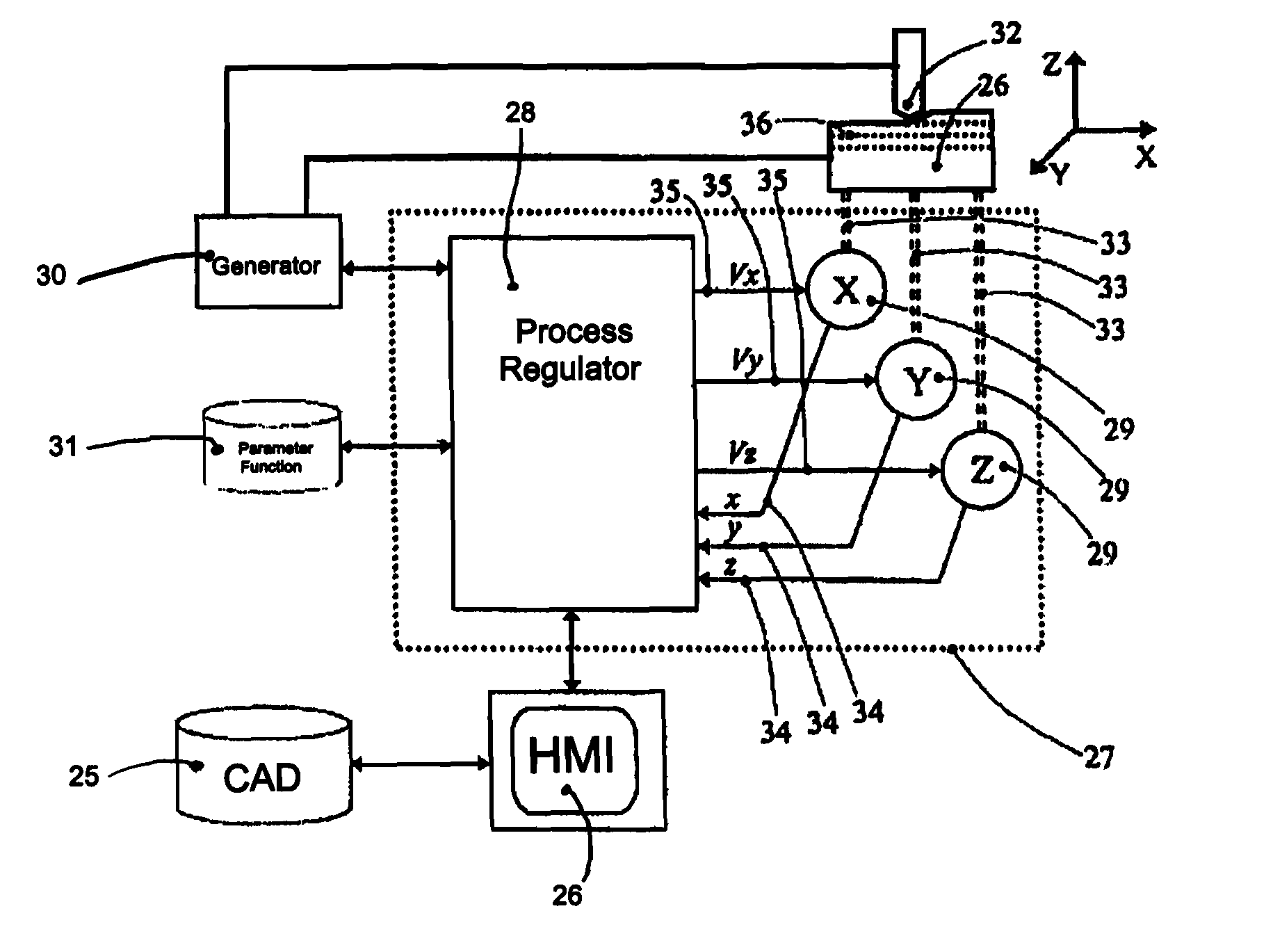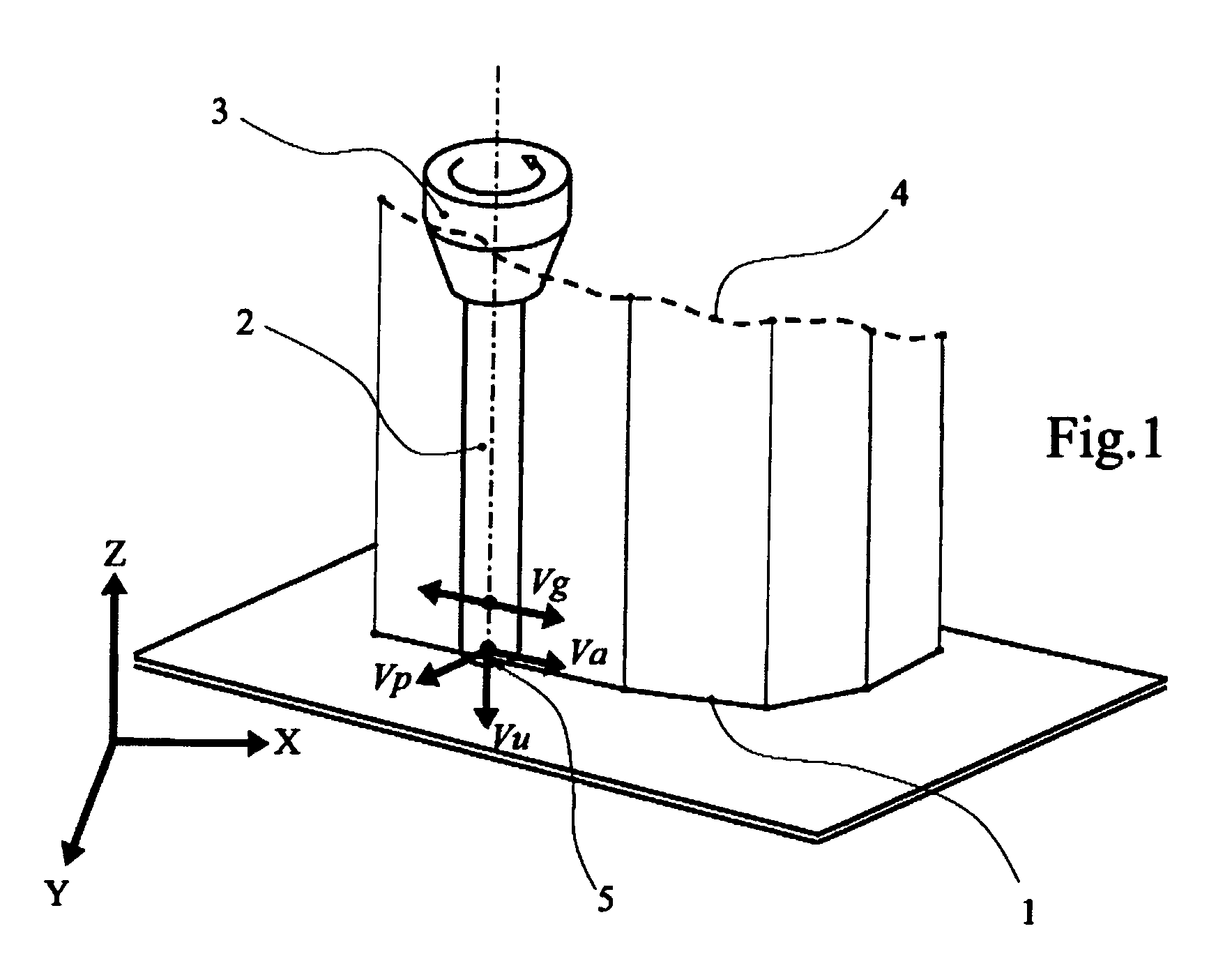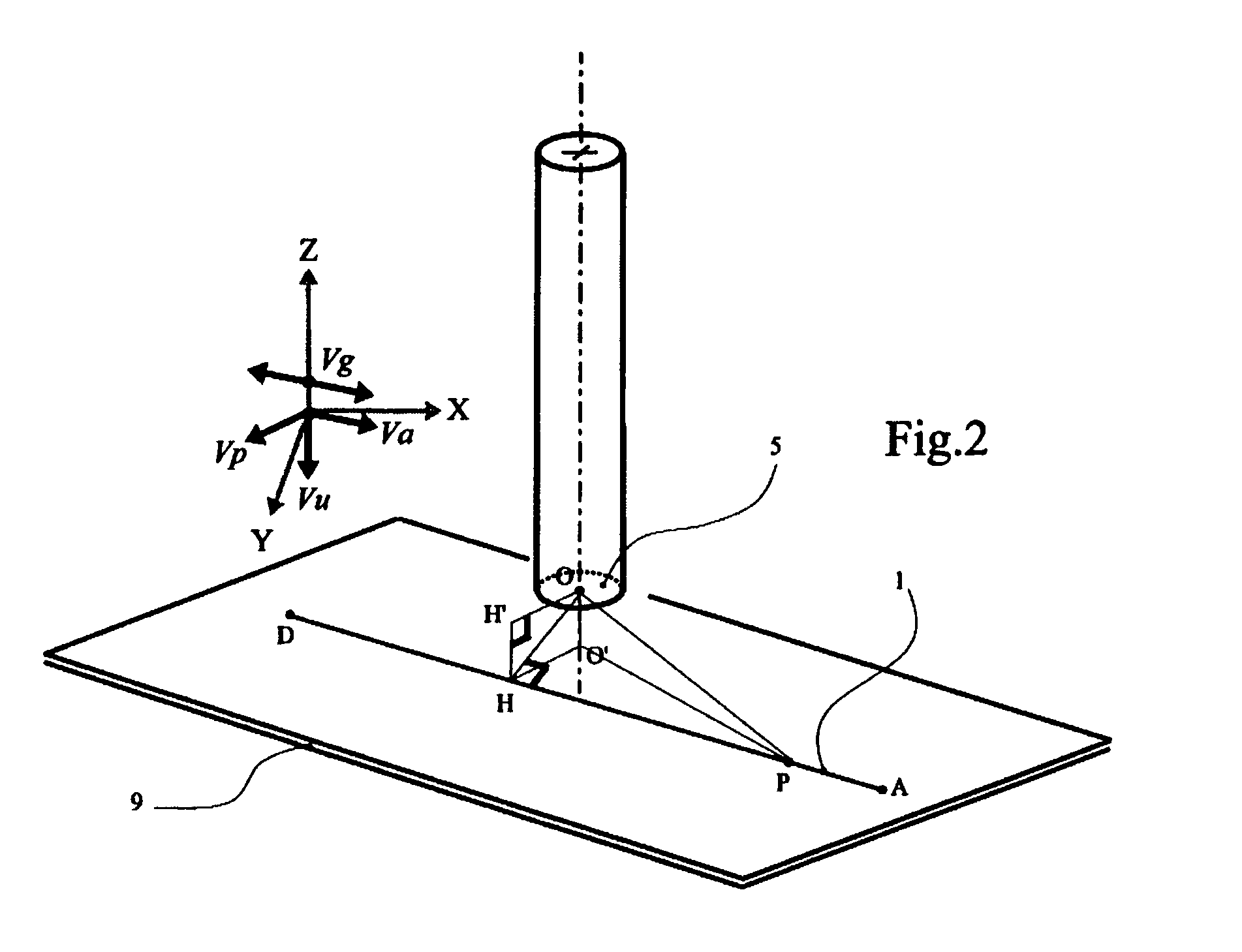Method and machine for machining parts using spark-erosion milling
a technology of spark-erosion milling and parts, which is applied in the direction of electrical-based machining apparatus, program control, instruments, etc., can solve the problems of increasing the need to perform considerably greater movements, and the need to rapidly increase the separation of the tool from the part, so as to eliminate the displacement instabilities of the tool electrode
- Summary
- Abstract
- Description
- Claims
- Application Information
AI Technical Summary
Benefits of technology
Problems solved by technology
Method used
Image
Examples
Embodiment Construction
[0047]In order to explain the invention in a detailed manner, a number of execution modes will be explained hereinbelow. However, first, it is necessary to define the following specific concepts: Nominal Trajectory, Control Vectors, Advance Vector, Gap Vector, Wear Vector, Position Error, Position Vector, Inter-Segment Bisecting Line.
[0048]Referring to FIG. 1, the Nominal Trajectory is defined by means of a computer file supplied upstream of the machine's numerical control system; this is a succession of linear segments 1 or blocks defined relative to a part coordinate system X,Y,Z. The Nominal Trajectory describes, at each layer, the movement of the tool 2 as it ought to proceed if no disturbance were to occur during machining and if there were no tool wear. However, since there is usually wear, the tool holder 3, in order to compensate for this wear, must follow in real time a trajectory 4 which constantly drifts relative to the Nominal Trajectory 1, while the end of the tool 5, d...
PUM
| Property | Measurement | Unit |
|---|---|---|
| speeds | aaaaa | aaaaa |
| electrically conductive | aaaaa | aaaaa |
| displacements | aaaaa | aaaaa |
Abstract
Description
Claims
Application Information
 Login to View More
Login to View More - R&D
- Intellectual Property
- Life Sciences
- Materials
- Tech Scout
- Unparalleled Data Quality
- Higher Quality Content
- 60% Fewer Hallucinations
Browse by: Latest US Patents, China's latest patents, Technical Efficacy Thesaurus, Application Domain, Technology Topic, Popular Technical Reports.
© 2025 PatSnap. All rights reserved.Legal|Privacy policy|Modern Slavery Act Transparency Statement|Sitemap|About US| Contact US: help@patsnap.com



